LG Google TV Review
by Jason Inofuentes on October 2, 2012 9:00 PM EST- Posted in
- Google TV
- Media Streamer
- Media Player
- LG
- Honeycomb
- Android
- LG L9
- LG G2
I’m really not sure how it happened. Despite our coverage of so many different streaming boxes over the years, we somehow never reviewed Logitech's Revue, their entrant into the Google TV space. We took a long hard look at a Sony BluRay/Google TV combo; but despite having had our hands on just about every piece of tech running Google TV that remains, until now, our only review. Perhaps, and this is serious, the other editors that had handled the gear felt just how unfinished the product really was; and knew it would be a labor of love to slog through it. Wish they’d tipped me off. We’re expecting big things from Google with regards to Google TV in the next few months, certainly by CES. So, we figured, before we see what’s next, let’s look at what’s best. And so, we have the LG Google TV. ::Nods head::
Let’s back-up a bit and look at where we’ve been.
Before Netflix popularized the idea of streaming video to devices of all shapes and sizes, one group was working hard to make that sort of thing a reality in their own homes, HTPC DIYers. I built a huge noisy machine for playing back local content and handling web video, and continually upgraded it from about 2005 until . . . well, today. Gradually, some media playback devices started to trickle out from the likes of Asus, Popcorn Hour and Western Digital, that filled this role. These devices generally used cheap MIPS based SoCs to drive playback of compressed video streamed from attached storage or locally on a network. Underpowered in terms of compute, their UIs were often sluggish, and codec support often wasn’t extensive, so it was important to ensure your files were encoded to match your player. These weren’t bad solutions, but Netflix would stymie their popularity.
When Netflix’s streaming services exploded in popularity, one theretofore unknown company was ready to step in. Roku made what first seemed like an absurdly single purpose device. Its internals weren’t too different from the streamers that had preceded it, but instead of focusing on local content, the little black box was built to stream Netflix on your big screen. The low entry cost of the box (just $99), and the popularity of the Netflix service was a match made in heaven. While Roku’s sales aren’t in the vicinity of, say, the Xbox 360, it certainly exceeds all the streamers that had preceded it, combined.
The explosion of popularity of streaming services inspired many playback devices, and the systems were integrated into TVs, DVD and BluRay Players and, fatefully, game consoles like the Xbox 360. Microsoft’s game console is as well equipped a media player as it comes, with local and network media playback, as well as access to all of the major streaming services’ wares. Parallel to this, though, was Apple TV. The minuscule Apple TV was limited in all the right ways. It was locked into the iTunes store for all of its content, and had little to no storage. Indeed the earliest versions were 720p devices that didn’t impress in picture quality. What Apple TV did have going for it was expectations. Users had already seen how Apple’s iOS was blessed with new features that extended the platform's capabilities, and hoped to see the same for the odd, corded cousin. In particular, users wanted apps.
Today, when your smartphone doesn’t natively do something, you get an app. Operating systems, even mobile ones, can’t be constantly and infinitely updated to provide new functions or experiences. iOS development proved that fast and cheap development cycles freed them to experiment with services and experiences in a way that traditional PC development lacked. The result was an explosion of apps designed to alter and enhance everyday behaviors. To media player enthusiasts the idea of a little TV box with apps would be a great way to see innovation where it is so desperately needed.
Apple TV still doesn’t have an appstore. And the limited apps available leave it at best with parity in the market. Where the Apple TV has broken new ground is AirPlay. A long standing geek dream is to be able to effortlessly send a video from one device to another, wirelessly. AirPlay does this so seamlessly, the TV becomes a compliment to the iPad, in an odd role reversal.
Originally announced at Google I/O 2010, the Android on TV implementation was hotly anticipated. On its release, though, it fell far short of expectations. The Android 2.x underpinnings were obfuscated by a 10-foot UI whose biggest feature was integration with Google Search. The combination of Google Search with the index of available streaming and local listings made it possible to find available content related to your search terms simple. But the rest of the affair was clunky. Though available in a satellite TV STB, and integrated within a Sony set, Google TV was always somewhat offset from the actual television watching experience. Indeed, even in the Dish DVR into which it was integrated, it was possible to have UI elements from the STB overlaid atop Google TV UI elements, and have no clear way to eliminate one or the other separately.
Apps were limited to a small handful, and no app marketplace was initially included. Instead, Google’s Chrome browser was provided, so that users could simply surf to the content they wanted. Unfortunately, many content providers weren’t willing to share and left Google TV devices off of their whitelists, so services like Hulu Plus were unavailable. And perhaps most damning of all, performance wasn’t up to snuff. Based initially on x86 Intel hardware, first generation Google TV software never delivered a smooth UI experience, and even had issues with smooth Flash HD video playback.
As these first generation devices floundered, we were left befuddled about why this all seemed to be going so wrong. No one had, nor has yet, put together that perfect combination of components and software to deliver the perfect big screen experience. Typical STB silicon is underpowered for UI and 3D performance, and even when it’s given a little more oomph, as in Intel’s SoC hardware, it still fell short. In the meanwhile, software could deliver some excellent experiences, but fall so short in others.
A number of software updates came that moved things along a bit. Transitioning Google TV to an Android 3.x platform was meant to make it easier for Android developers to design apps that would work across phones, tablets and televisions, using a design framework they pushed heavily at Google I/O 2011. The Honeycomb builds also improved UI responsiveness, though hardly perfected it. The App Marketplace (later renamed Google Play Store) arrived, but the initial run of apps were a bit mundane.
We set off for CES 2012 with little enthusiasm for the space, even as we knew that “smart TVs” would be the new big thing all the OEMs would be pushing. But that hopefulness reared its ugly head again as we learned about some big changes for Google TV, both in hardware and software. All second generation Google TV devices would move to ARM silicon, including SoCs from Marvell (long a player in the video silicon space) and a surprise entrant, LG. Korea’s LG would also play a role in a big software change for Google TV, the first skinned implementation. Skins over Android are rarely something to get excited over, and can often be a detriment to performance, but the reality was that the bar was so low with Google TV that anything that could inch it up would be considered a blessing.
And so, here we are. With a 47” LG G2 Google TV enthroned atop our entertainment center and all wired up. And what do we think? Sigh.


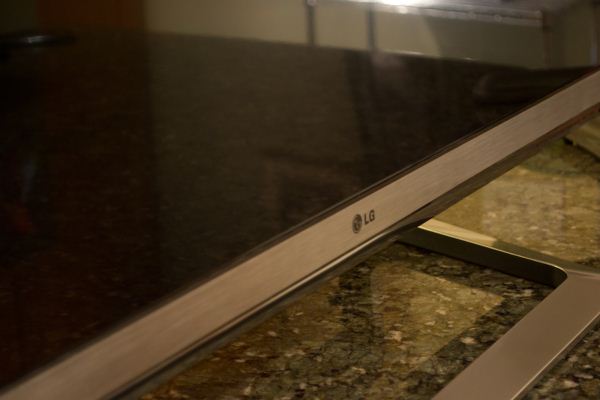
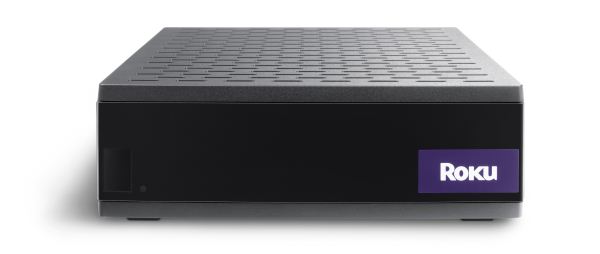
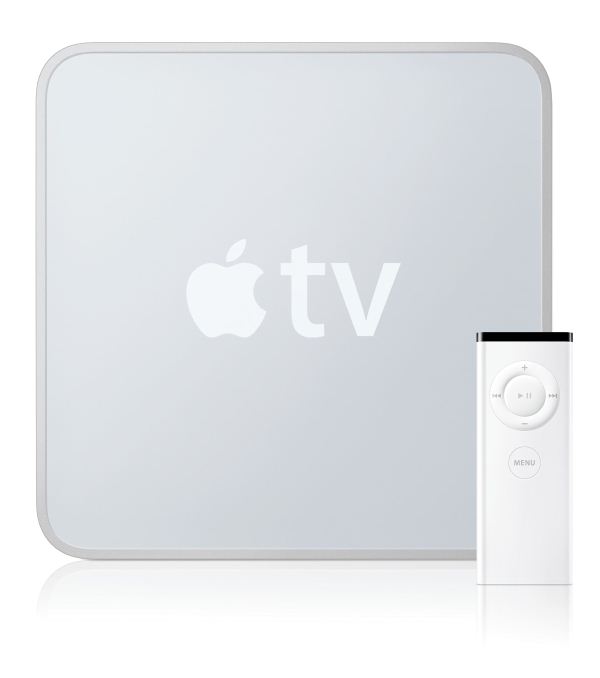
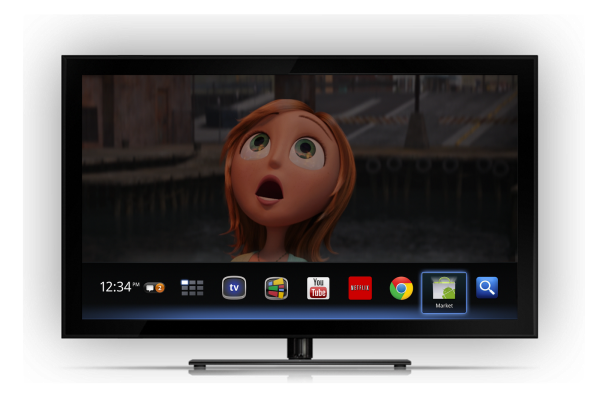
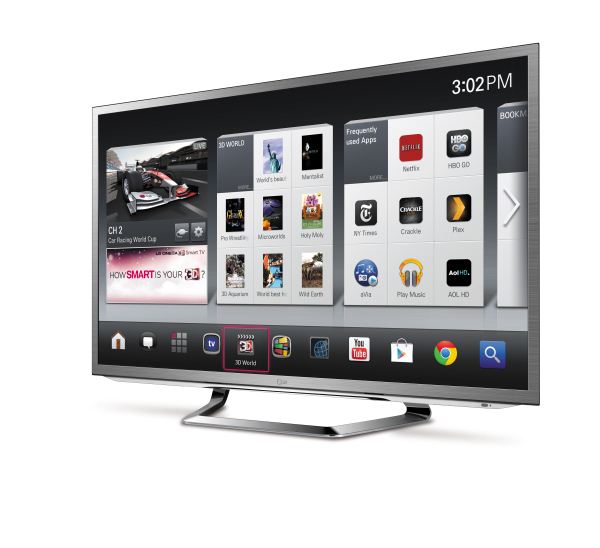








50 Comments
View All Comments
EnzoFX - Tuesday, October 2, 2012 - link
No these solutions aren't revolutions, but isn't it all we need?A revue seems to be all I need. Skip the provider cable/sat boxes, and all you're left with is a pretty streamlined solution to stream online content. Sure it's all a lot of boxes due, but I like the fact that there's a much more direct support from Google themselves. It works. How often do some other boxes have issues with their own implementations of youtube or netflix, etc.
Is this not all we need? The app store is the real next hurdle, and it's bound to come, but until then, direct support for the basics, which even a power user must admit is 90% of what they would do with a TV is solid. This with the fact that it will trickle into your tv regardless is a nice icing on the cake for a sweet panel. Which if you think about the market, it's all about getting cheaper panels out.
Guspaz - Wednesday, October 3, 2012 - link
The problem is that Google TV doesn't even seem to meet the existing requirements, let alone define anything revolutionary. Inability to play SD content properly? That's a pretty fundamental flaw. It sounds like, from the review, anything 16:9 should work fine in "full screen" mode, but anything 4:3 would not work with that (don't want it stretched out), so you end up with a tiny little 4:3 standard def window on a big screen... I don't understand how a media player can fail so utterly at something so basic.You don't even need an option here. It's video playback. Whatever resolution or aspect ratio it is, stretch it up so that it takes up as much of the screen as possible without cutting anything of. It's what every single video player on the market does, except apparently for this one...
JasonInofuentes - Wednesday, October 3, 2012 - link
To be clear, that flaw, the awkward stretching of non-16:9 content, is only a problem in the "Media Player" app, which plays local content. Content streamed from the internet is almost always handled by the browser, or a provider's app, and those don't exhibit this behavior.jjj - Wednesday, October 3, 2012 - link
Weird to see a review for a TV here.Anyway, the problem with TVs is that everybody thinks of them as TVs and not just screens. It shouldn't be about how we get media content or the UI or the remote or w/e other minor thing most think is the key,we'll manage when it comes to that and those are the easy things (that was me trying to make a point without giving away very specufic ideas ).
Google TV is just named wrong and missunderstood,it's about the internet on that screen,not about media content (even Google after a point went with the idea that it's about media).
JasonInofuentes - Wednesday, October 3, 2012 - link
The thing is, if it were just about getting the internet on a TV then we should all have slim PC's hooked up to our TV's with wireless keyboards and mice. It's about changing the way content is found. Jeff provided a good description above of what an ideal for current content would be (instant streaming availability the moment a show airs) but that's only half the equation. For content creators and consumers alike, getting the right content to the right viewer is the holy grail. And if you have new content that appeals to people that like certain old content, or that meet some other demographic measure, then you could really score big by finding a way to connect the two. Google's solution was search as a user behavior and then related content as the connector. I search for content, and whether it's available or not, I am presented with a raft of other content that is available and relatable.Impulses - Wednesday, October 3, 2012 - link
" Too many cooks stir the pot in the US television industry; and until someone manages to pare that down to a scant few, we’re not likely to get the on-demand, always ready, universal experience that this pastime has been aching for. "Could say the same for the mobile industry (and even the music industry), although it's greatly magnified with TV. I'm hardly a Jobs or Apple fan, but the impact that they had in wrestling some degree of control away from music studios and mobile carriers was huge, I'm not sure if anyone's ever gonna manage the same for TV & movies (Netflix's probably come closest before facing a ton of push back from studios).
Ten years from now we might remember those victories as Job's biggest impact, rather than the success of any one device... And we'll probably still be whining about cable/sat companies, studios, etc.
JasonInofuentes - Wednesday, October 3, 2012 - link
+1antef - Wednesday, October 3, 2012 - link
Thanks for writing this great review. Too often "reviews" on tech sites nowadays are just a run-down of the features you could get from looking at the product sheet without any real investigation, totally missing obvious pain points that a real user would see after just a few minutes. I want to hear about the actual experience of using a device, in a person's own words, like an Amazon review, and this article was spot-on. I liked hearing about some of the finer details of the platform since I haven't used it myself but have been wondering for some time if it would be a good fit for me. What I'd like to see is Google upgrade this to Jelly Bean and release a Nexus Google TV device for $99. It could have the potential to be the ultimate connected TV experience.JasonInofuentes - Wednesday, October 3, 2012 - link
Thanks for the feedback.We'd heard rumblings of a "Nexus Google TV" for a while, and even the possibility that LG might be a partner in such a device. I think what we'll instead see is the disseminated experience I laid out. No longer will there be a vanilla Google TV experience, simply, the tools that make Google TV good will be made available to partners, and they're responsible for building the UI and fleshing out the experience.
This is kind of a smart bet. The Samsungs, Sonys and LGs of the world have been building TV's and TV UI's for ages, and love them or hate them, they do have the most experience with them. So, for Google to do all the guess work and try to build a UI themselves is risky, especially when you consider that people have always seen TV's as a long cycle product. Six month UI refreshes work fine on phone's since people swap phones every two years, or less. Same with tablets and other CE products. To a certain extent, even PC's (look at Apple's slow tweaking of OS X). But TV's have glacially moved from dials, to remotes, to on-screen menus, to the Smart TV era. If Google makes a bad bet on a UI and a partner doesn't care to update their product with a newer, better UI, Google ends up with egg on their face (see Android phones). Now, the $99 media box changes that equation pretty radically, but that's not where partners want to be. Margins on TVs and media equipment have gotten crazy thin, and Google TV works best as a content discovery service when it's fully integrated into the experience. So, a $99 box is a compromise for OEMs (super slim margins) and the user (multiple UI's layered atop each other).
antef - Wednesday, October 3, 2012 - link
Thanks for the response. I would be disappointed if it played out as you predict, with Google TV's core parts just being offered to partners to integrate into products and create their own experiences with. That's essentially how the Android market works, with the exception that Google does provide Nexus "Google experience" devices, which I prefer to use. It's nice that Android exists for OEMs to create their own ecosystems out of, but I personally don't trust most of their work and would rather use the pure experience straight from Google. Imagine if you had no choice but MotoBlur, Sense, or TouchWiz on phones? That would suck.You give credit to Samsung's and LG's TV UI experience but I just don't see it. You pointed out yourself all the strangeness with LG's UI on this TV. Samsung just throws everything at the wall to see what sticks. Their TouchWiz UIs are the least elegant Android skin out there, and now with their new TVs they're trying voice, motion sensing, everything. An integrated experience from a company like this will always be a bad experience. Too much ads, and worse, too much of their own content and stores being shoved down our throat. It will never look like a cohesive solution, leaving the door wide open for Apple to come in and do it better.
The $99 box should be EXTREMELY appealing for Google, for the same reason Android is appealing to them: getting more people searching the web and seeing ads. TV is a huge untapped market with lots of people not currently in the smartphone-owning demographic. Google should get hardware into these people's hands as cheaply as possible to get them searching Google, using Chrome, etc. from their couches. The $99 box is also a win for consumers as it lets them swap it out whenever technology advances independently from their TV.
If a Nexus Google TV device doesn't happen I will probably seek out the closest to stock experience at the same price point from a partner.